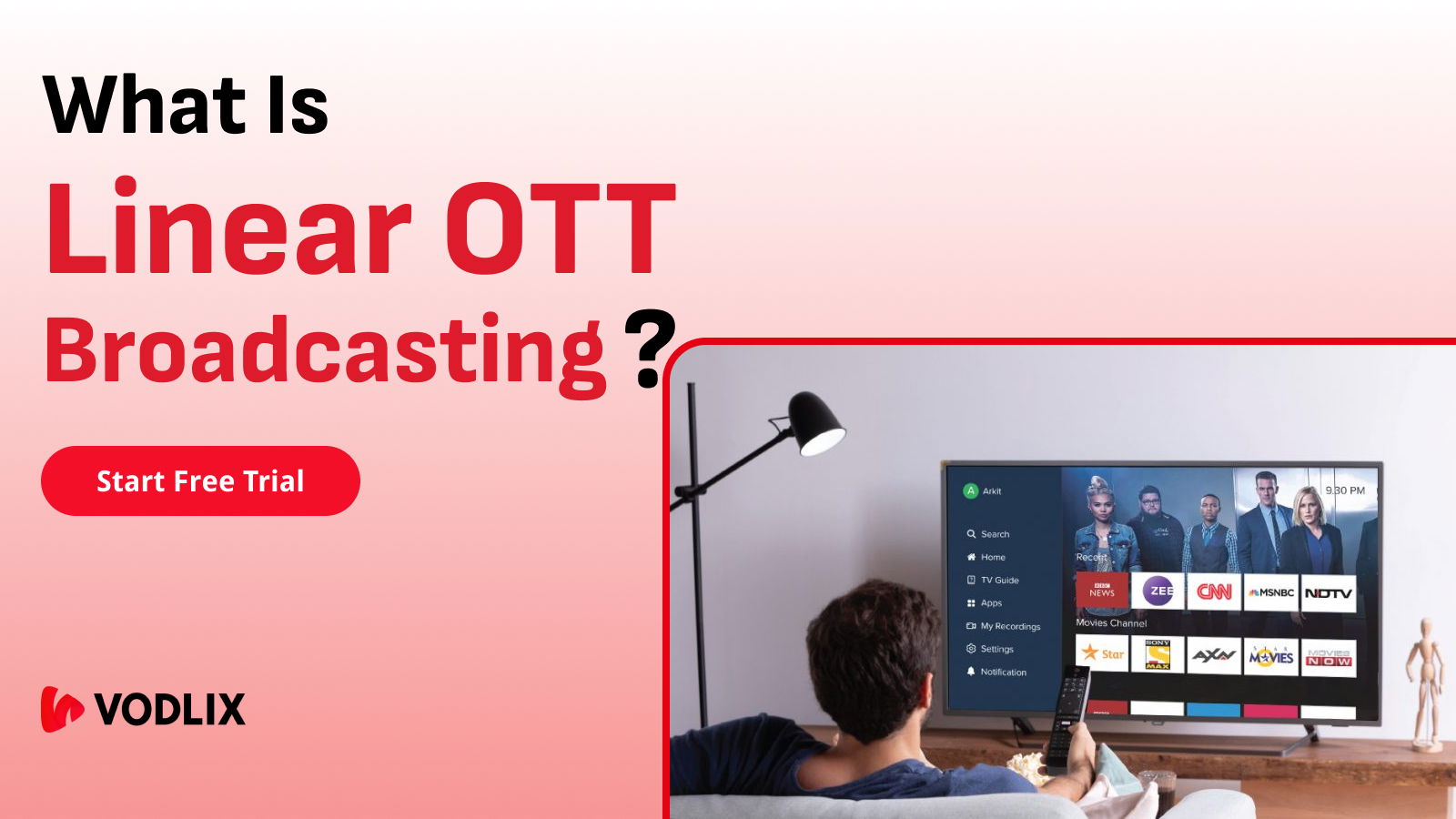In the fast-evolving world of digital media, terms like "OTT" and "linear broadcasting" are becoming more common. These technologies are changing the way we consume content. But what exactly is linear OTT broadcasting, and why should you care? This article will break down everything you need to know in simple terms.
OTT stands for "Over-The-Top." It refers to the delivery of film and TV content via the internet, without requiring users to subscribe to a traditional cable or satellite service. Popular OTT platforms include Netflix, Amazon Prime Video, and Disney+. These services allow you to stream content directly to your devices, such as smart TVs, tablets, and smartphones.
Linear OTT (Over-The-Top) Broadcasting refers to the delivery of live, scheduled content over the internet, similar to traditional television but via OTT platforms. Unlike Video on Demand (VOD), where viewers choose what to watch and when, Linear OTT streams content in a continuous, scheduled format. This means that viewers tune in to watch shows, news, sports, or events as they happen in real-time, just like with traditional TV channels.
Linear OTT broadcasting combines the principles of both linear broadcasting and OTT delivery. It means streaming live TV channels over the internet, following a scheduled program lineup just like traditional TV. But instead of using a cable or satellite connection, everything is delivered via the internet.
Linear OTT broadcasting works by streaming content over the internet using OTT technology. Here’s a step-by-step breakdown of how it works:
Content Creation: Content is created and compiled just like it is for traditional TV. This can include live news, sports, TV shows, and movies.
Encoding and Compression: The content is encoded and compressed to ensure it can be streamed over the internet efficiently without losing quality.
Content Delivery Network (CDN): The encoded content is then distributed to various servers across the globe via a CDN. This helps to deliver the content quickly and reliably to users, regardless of their location.
Streaming to Devices: Users access the content through an app or a web browser on their device. The app or browser connects to the CDN and streams the live content.
Linear OTT broadcasting brings several benefits, making it an attractive option for both viewers and broadcasters. Here are some key advantages:
Flexibility: Users can watch their favorite live TV channels on any internet-connected device, such as a smart TV, tablet, or smartphone.
No Need for Cable: There’s no need for a traditional cable or satellite subscription. All you need is a reliable internet connection.
On-the-Go Viewing: You can watch live TV on the go. Whether you’re commuting or traveling, you won’t miss out on live broadcasts.
Personalized Experience: Many linear OTT services offer features like DVR, allowing you to pause, rewind, and record live TV. Some platforms also provide personalized recommendations based on your viewing habits.
Cost-Effective: Often, linear OTT subscriptions are more affordable than traditional cable or satellite TV packages.
While linear OTT broadcasting has many benefits, it also comes with some challenges:
Internet Dependency: Your viewing experience depends on the quality of your internet connection. Slow or unreliable internet can lead to buffering and poor-quality streams.
Data Usage: Streaming video consumes a lot of data. If you have a limited data plan, you may need to monitor your usage to avoid extra charges.
Content Licensing: Licensing agreements for content can be complex. Not all channels or programs available on traditional TV are available on linear OTT platforms.
Several services offer linear OTT broadcasting. Here are a few popular examples:
Hulu + Live TV: Hulu offers a combination of on-demand content and live TV channels, making it a popular choice for cord-cutters.
YouTube TV: YouTube TV provides access to a wide range of live TV channels, along with unlimited DVR storage.
Sling TV: Sling TV offers customizable packages, allowing users to pick and choose the channels they want to subscribe to.
fuboTV: Originally focused on sports, fuboTV now offers a wide range of live TV channels, including news, entertainment, and more.
AT&T TV Now: Previously known as DirecTV Now, this service offers a variety of live TV channels and on-demand content.
When choosing a linear OTT broadcasting service, consider the following factors:
Channel Lineup: Make sure the service offers the channels you want to watch. Compare the channel lineups of different services to see which one best meets your needs.
Price: Consider your budget and compare the prices of different services. Look for any additional fees or hidden costs.
Features: Check for features like DVR, multiple user profiles, and simultaneous streaming on multiple devices. These can enhance your viewing experience.
Device Compatibility: Ensure the service is compatible with your devices. Most services support a wide range of devices, but it’s always good to double-check.
Trial Period: Many services offer a free trial period. Take advantage of this to test the service and see if it meets your expectations.
The future of linear OTT broadcasting looks promising. As internet speeds continue to improve and more people cut the cord, the demand for live streaming services is expected to grow. Here are a few trends to watch:
Increased Adoption: More households are expected to adopt linear OTT broadcasting as an alternative to traditional cable and satellite TV.
Enhanced Features: Expect to see more advanced features, such as interactive content, personalized ads, and improved user interfaces.
Global Expansion: As internet access improves worldwide, linear OTT services will likely expand their reach to more countries and regions.
Content Diversity: With increasing competition, services will continue to diversify their content offerings to attract and retain subscribers.
As the digital landscape continues to evolve, Linear OTT Broadcasting stands out as a powerful tool for delivering live content in real-time. It offers the immediacy of traditional TV with the flexibility and reach of internet streaming, making it an essential component of the modern viewing experience.
For those looking to harness the power of Linear OTT Broadcasting, Vodlix provides an all-in-one solution tailored to meet your needs. With Vodlix, you can leverage a variety of monetization models, manage your partners effortlessly, and enjoy robust features like Live TV functionality with EPG and DVR capabilities. Vodlix ensures a seamless, high-quality streaming experience for your audience, helping you stay ahead in the ever-competitive streaming market. Explore the potential of Linear OTT Broadcasting with Vodlix and take your live streaming to the next level.



.png)


